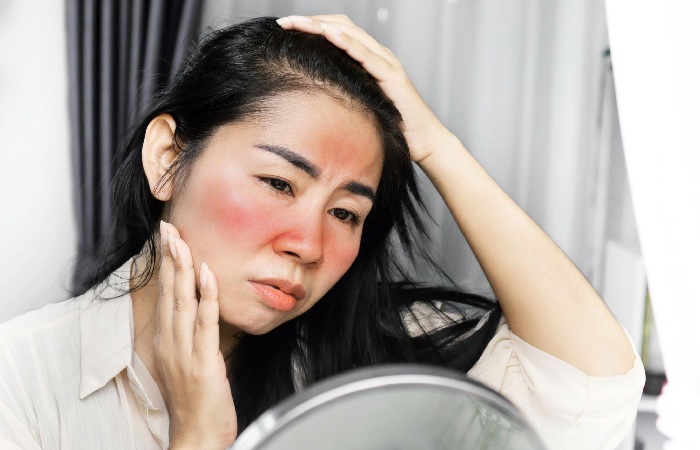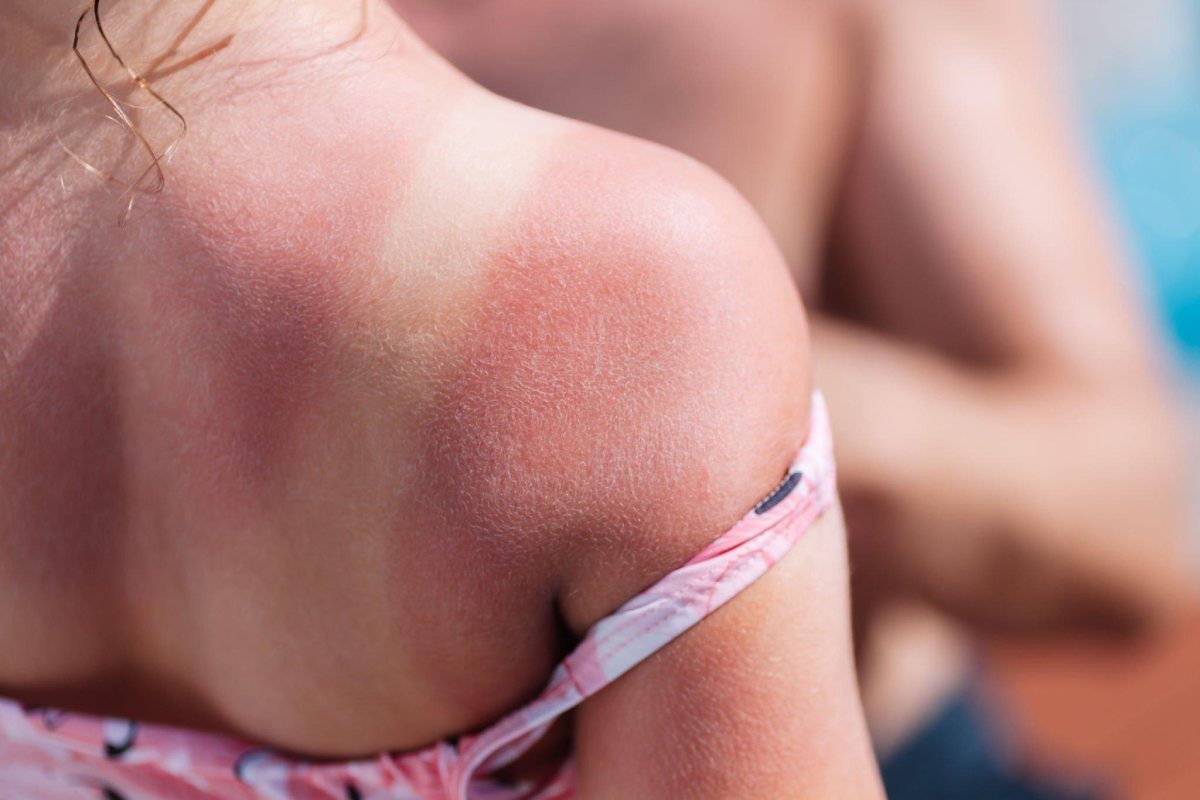Sunburn- When the sun reaches the skin, it damages the skin cells and causes mutations that can eventually lead to melanoma and other types of skin cancer. A sunburn is not the same as when you burn your skin on something hot.
“When we think of a burn, we think of heat. But it’s not the sun’s heat that burns our skin,” That’s why you can still get sunburned when the weather is cold. “Sunburns are from ultraviolet radiation or UV rays causing damage to the skin,” George says.
Table of Contents
How Your Skin Changes During a Sunburn?
When sun rays reach the skin, it damages the skin cells and causes mutations in their DNA. “Our bodies have a lot of amazing mechanisms to prevent and even correct these mutations,” George says. “But if the skin cells get more UV exposure than they can handle, the damage may be beyond repair, and the cells die off. Blood vessels dilate to increase blood flow and bring immune cells to the skin to help clean up the mess. All this causes the redness, swelling and inflammation associated with sunburn.”
The sunburn will eventually heal, but some surviving cells will have mutations that escape repair. As a result, these cells could eventually become cancerous.
Can We Reverse Sun Damage?
Some beauty products claim they can reverse sun damage or stimulate cell repair. But no research has shown that any topical skincare product or lotion can reverse sun damage.
“There’s no simple way to undo sun damage yet,” George says. “But there are many simple ways to prevent it by being sun-safe and avoiding sunburns.”
Some Tips For Sunburn
There’s no quick fix for sunburn. Like any burn, it takes time to heal. Skin hydrating and moisturizing creams may also temporarily relieve pain. Many believe these can also reduce eventual peeling, but this isn’t proven.
Butter, an old sunburn remedy, is inappropriate, as it increases the risk of infection. Likewise, soap should kept clear of burn areas as it irritates. Anesthetic sprays or creams should also avoid unless recommended by a doctor.
In extreme cases, with blistering and large areas of second-degree burns, the sunburn victim is admitted to a burn unit at the hospital. Treatment is identical to other burn patients’ treatment, including steroids and fluid replacement.
Treatment and Prevention of Sunburn
The best advice for sunburn is to avoid it altogether. The recommendations are given by public health experts on sun exposure generally consist of this:
Avoid the sun between 11 am and 4 pm when the sun’s rays are most intense.
Wear sunblock with a sun protection factor of 30 or higher, preferably one that protects against UVA and UVB whenever you are outdoors. Reapply at least every 2 hours, and more often if you are swimming or sweating.
Don’t rely just on sunblock. Tightly woven clothes and hats provide even better protection.
Don’t be fooled by cloudy days. Up to 80% of the sun’s radiation reaches the earth even when it’s dirty. Always protect exposed skin.
Don’t just worry about the sun in summer; UV exposure is a year-round problem. For example, snow reflects 80% of UV light, compared to only 20% by sand skiers getting sunburn. See your doctor if you notice any skin changes, including new growths or moles.
Despite the risks of sunburn, many Canadians still prefer the look of a “healthy” tan. As an alternative, many self-tanning products are available today that produce the appearance of a tan without the damaging effects of UV rays.
Conclusion
The use of sunscreens is an essential component of sun protection. Regular and appropriate use is associate with a decrease risk of skin complications and cancers due to UV radiation exposure. Sun protection must begin at an early age; approximately 25% of lifetime sun exposure occurs before 18 years.6 Pharmacists must educate patients regarding appropriate sunscreen use, emphasizing the proper amount and need for frequent reapplication. In addition, patients need to remind not to rely on the use of sunscreen solely. Other sun-protective measures are require to provide maximum protection.
Also Read: Bengaluru

